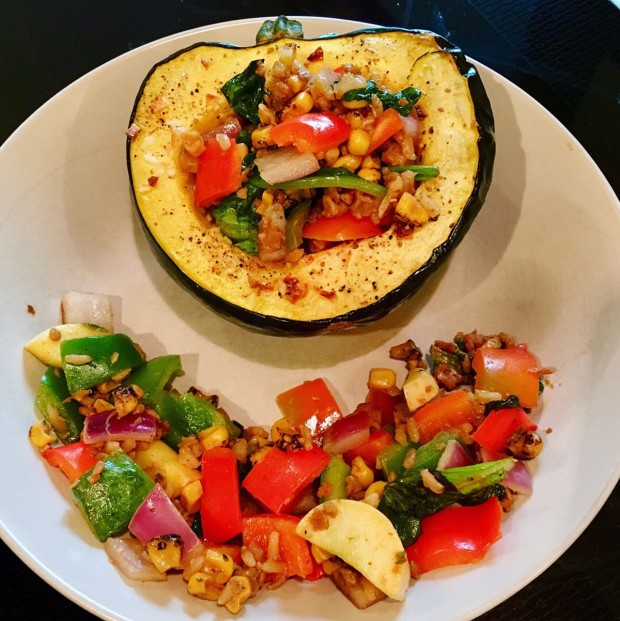Cooking with Karina: Squash Your Goals


Using fall vegetables, and the influence of her Texas heritage, Karina Arnold created this fall/winter vegetable twist on the classic taco bowl.
Karina Arnold is a senior at the University of Oklahoma who’s passionate about healthy cooking. She provides creative, healthy recipes and tips on clean eating.
The changing of the seasons means a changing of the cuisine. Large, colorful squashes and spuds replace bright summer fruits. Who buys squashes? What is inside their thick walls? Unlike fruits, squashes require a little extra effort to cook and prepare. Don’t be intimidated by these bright, globular vegetables nesting in your grocery’s wooded crates. Grab a squash or two and try this Acorn Squash Taco Bowl. This fall-winter vegetable dish is a yummy, low-carb, low-sodium twist to a classic taco bowl. Substituting or swapping your favorites for alternatives helps you stay on track with your fitness and health goals without compromising your sanity. You can make this dish or Stuff Your Spuds using local vegetables, spices and herbs from your Local Farmer’s Market.
Venturing to your local market or grocery during the fall and winter, squashes take up a bulk of the produce section. Not only are they delicious in season, they provide numerous health benefits. Squashes are packed in vitamins like iron, calcium and magnesium. These vitamins aid in lunge health, protect against heart attack and strengthens bones. In addition, the low sugar content and glycemic index of squashes’ helps manage diabetes and blood sugar levels.
If the health benefits alone don’t convince you to try a squash, then the lack of clean up should! Squashes are their own bowls, which means less dishes for you to clean. Squash bowls provide a lot of squash to eat but with less to clean.
You can cook each squash using different methods and spices; however, there is one basic method that works on all squashes. Cut the squash in half, scoop out the seeds, coat with olive oil and sprinkle salt and pepper. Bake at about 400-450 degrees (depending in the size of the squash) for about 40-50 minutes. I recommend always seasoning with salt since salt captures and preserves the flavor of the squash. Unlike fruits, squashes don’t explode with flavor. Protect your squash’s subtle flavor with salt and a coat of oil. Oil protects the tender inside from getting too cooked or cooked unevenly.
This fall, continue to squash your health, fitness and life goals by trying something new. Start with the basic squash cooking method to familiarize yourself with squashes and when in doubt, the internet always has advice. Once you feel ready to squash a new recipe, try this Healthy Mac and Cheese, another healthy twist to a classic dish. Have any savory squash recipes you want to share? Comment below!
Want more buzz like this? Sign up for our Morning Buzz emails.
To leave a comment, please log in or create an account with The Buzz Magazines, Disqus, Facebook, or Twitter. Or you may post as a guest.


